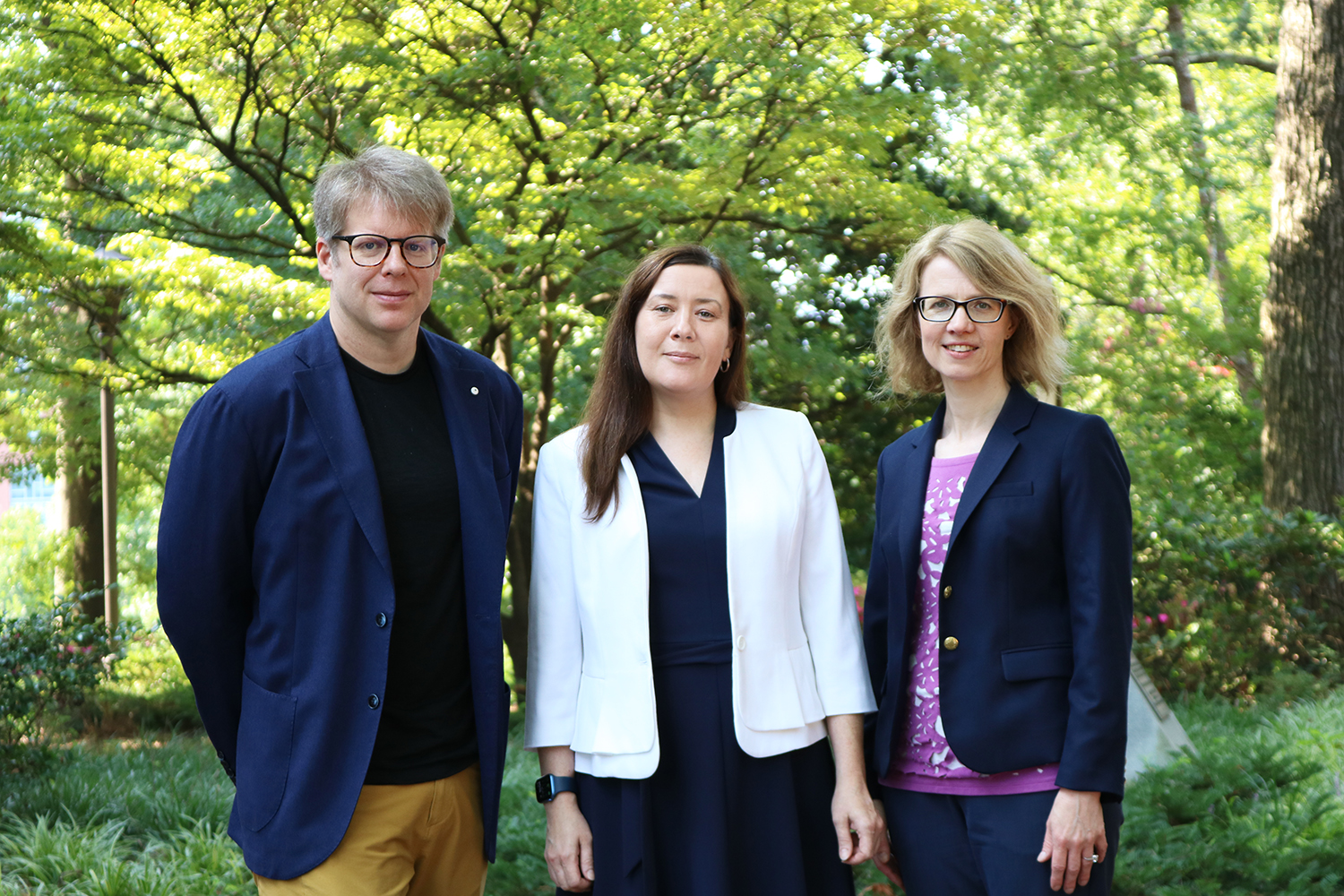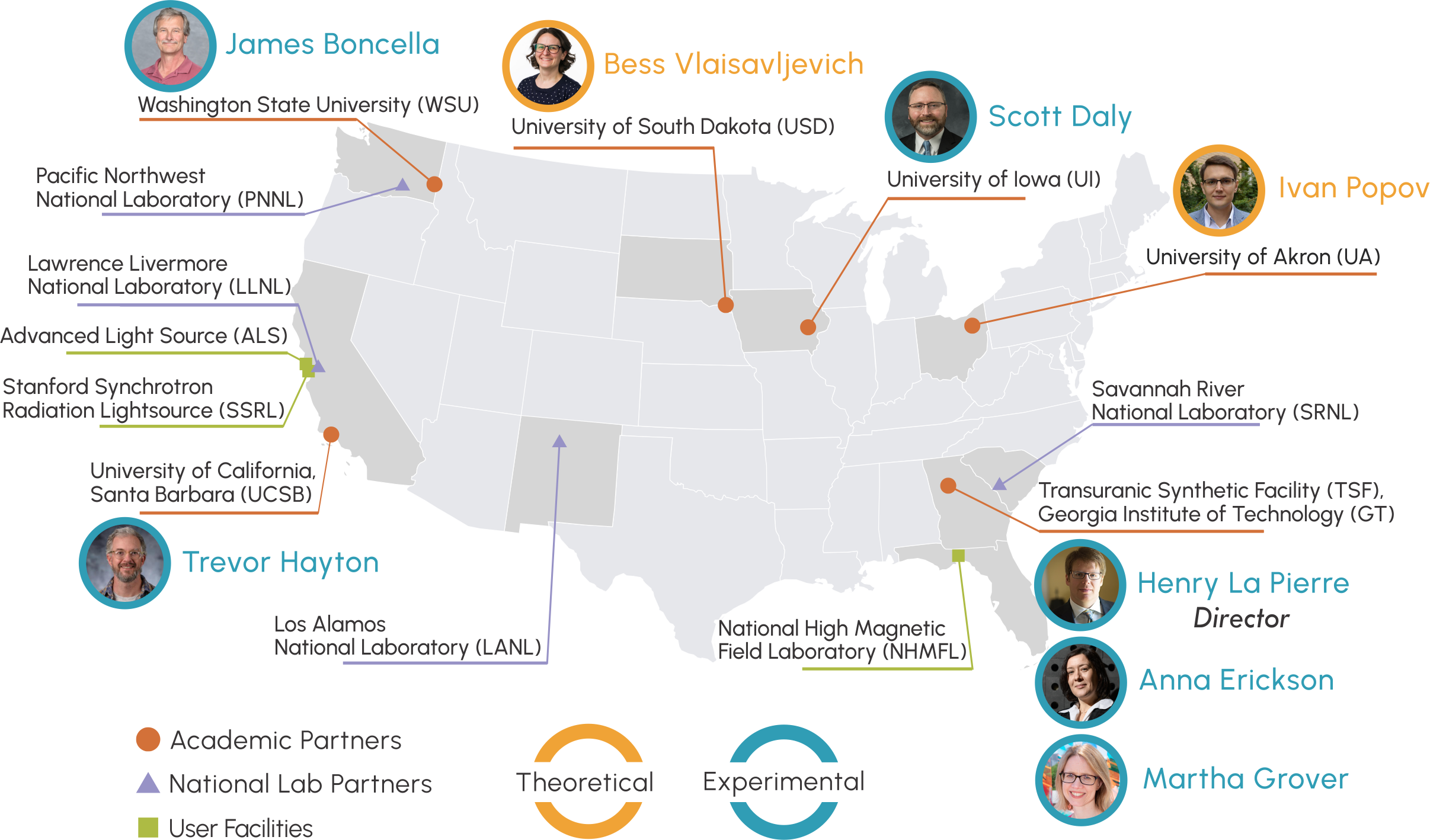Stockpile stewardship — safeguarding and maintaining nuclear defense materials using modern techniques — is a critical mission of the U.S. Department of Energy’s National Nuclear Security Administration (NNSA). Maintaining and expanding the necessary physical and human capabilities to complete this mission is driving renewed investments into nuclear science and engineering.
Georgia Tech researchers were recently awarded $11.6 million from the NNSA to address this growing need — and to study and expand on existing models of transuranic chemistry, a branch of chemistry dedicated to studying elements with atomic numbers greater than that of uranium.
Led by School of Chemistry and Biochemistry Associate Professor Henry “Pete” La Pierre, the funding will serve to establish the Transuranic Chemistry Center of Excellence. Directed by La Pierre, the Center will house a collaborative network of five other universities and six national laboratories across the United States conducting both theoretical and applied research.
“Scientifically, actinides and transuranic elements present unique challenges to existing models of chemical bonding,” explains La Pierre. These elements are man-made radioactive metals, many of which are not available in large quantities. “There are amazing open-ended questions that are fundamental to our understanding of chemical bonding and activities, that serve to transform our knowledge of how the elements form bonds across the Periodic Table.”
Joining seven other universities, this funding comes to Georgia Tech as part of NNSA’s $100 million program establishing Stewardship Science Academic Alliances Centers of Excellence. A main goal of this program is to recruit, train, and educate the next generation of researchers in nuclear science and engineering.
“These cooperative agreements will allow NNSA to train the smartest and most skilled individuals while creating a direct pathway into our workforce with a diverse group of experts that can meet the evolving needs of the nuclear security enterprise,” said Kevin Greenaugh, Chief Science and Technology Officer for Defense Programs, in a recent press release.
“The science and engineering collaboration of this center is a true synergy,” says Martha Grover, professor and associate chair for Graduate Studies in the School of Chemical and Biomolecular Engineering and one of the collaborators for the Center. Anna Erickson, Woodruff Professor and associate chair for Research in the George W. Woodruff School of Mechanical Engineering, is another Georgia Tech collaborator. “This center provides a new example of the growing prominence of Georgia Tech in the nuclear field.”
Pushing the bounds of chemistry
“We are at core a synthetic inorganic chemistry group, which means we make new molecules and characterize them,” La Pierre explained. In his research as part of the Center, La Pierre will “be handling both radioactive and chemically reactive species to make new forms of matter.”
Characterizing new forms of matter is no easy task, requiring advanced techniques that allow scientists to envision and measure the properties of chemical bonds. Exposing the molecules to X-rays or neutrons and measuring how they scatter or diffract (depending on the experimental design), gives researchers insights into the chemical bonds that are formed.
Using a combination of these advanced techniques as well as theoretical models, La Pierre and the collaborators of the Center will be creating new molecules out of actinides and lanthanides — metallic elements on the bottom of the periodic table — and studying the details of their structures and behavior during chemical reactions. As these elements are not found naturally, the structures and properties of many of these compounds have never been studied before.
“We are creating systems that challenge existing bonding models, which we then have to go back and build new theoretical techniques in order to understand what we're seeing,” La Pierre explained. “So, this does push the forefront of our understanding of basic chemical model systems.”
To push those boundaries, scientists and engineers will be working together across the country — led by Georgia Tech.
“There are so many faculty at Georgia Tech working in nuclear science and technology,” says Grover. “This center gives me the opportunity to collaborate with Prof. La Pierre and Erickson for the first time, in the area of flow chemistry and separations.”
“I'm looking forward to working with some incredibly talented colleagues whom I don't normally get a chance to work with,” says La Pierre. “And now we have the opportunity to work together every week with fantastic students that I would never have met otherwise. That's the main draw for me.”
For More Information Contact
Writer: Audra Davidson
Communications Officer II, College of Sciences
Editor: Jess Hunt-Ralston
Director of Communications, College of Sciences




